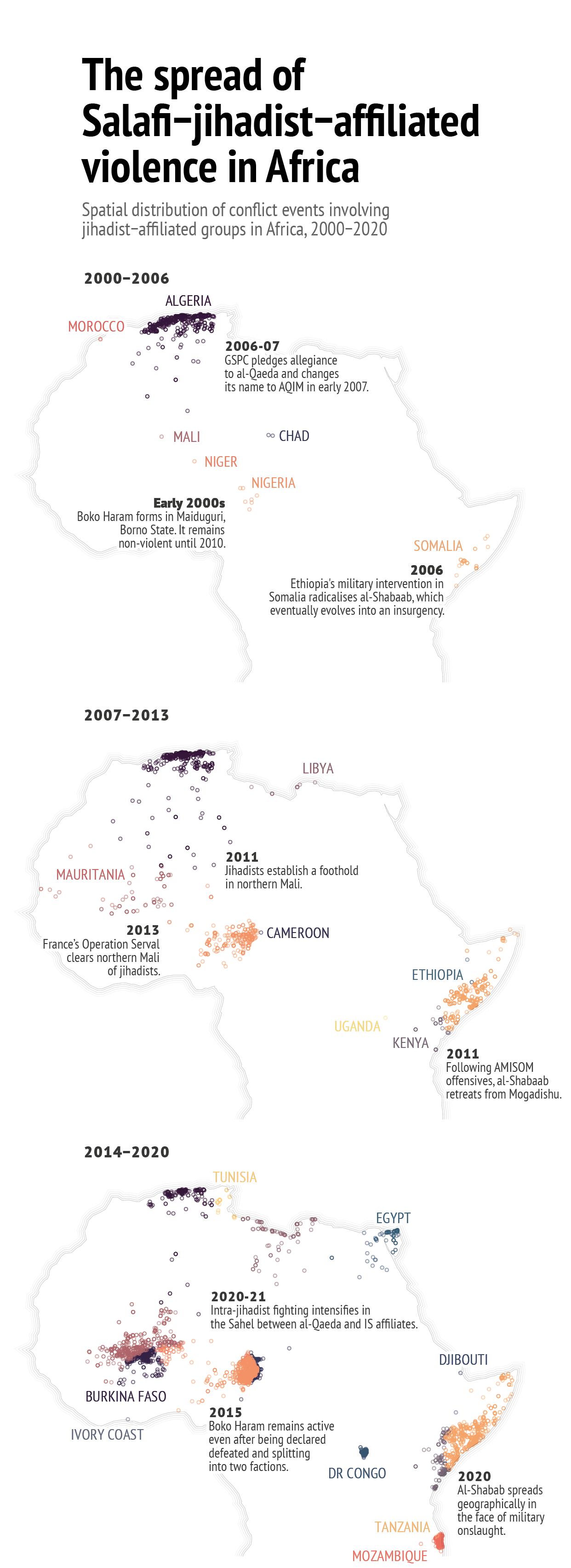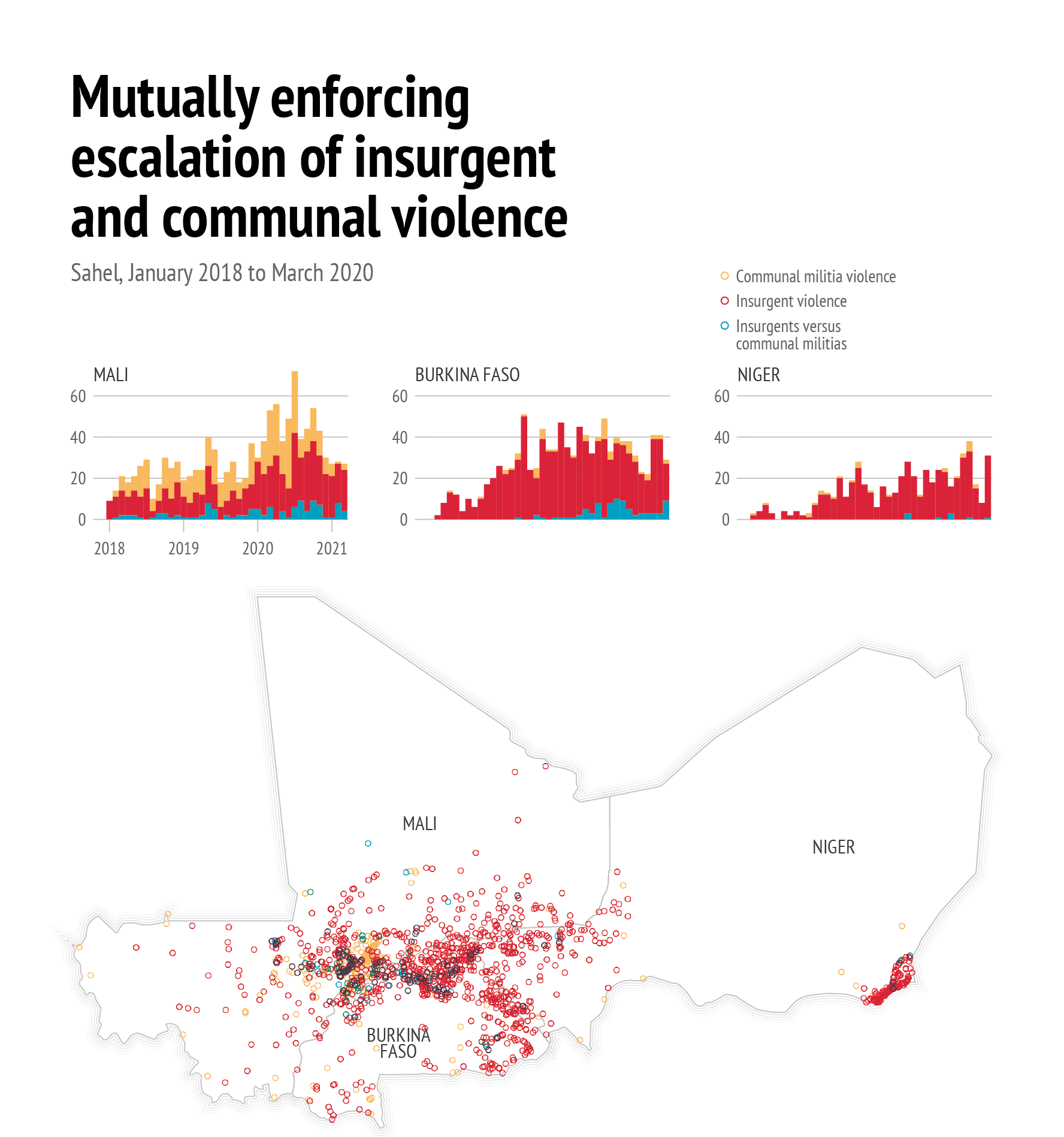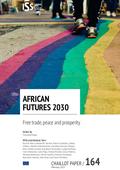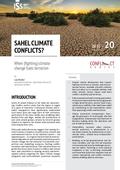You are here
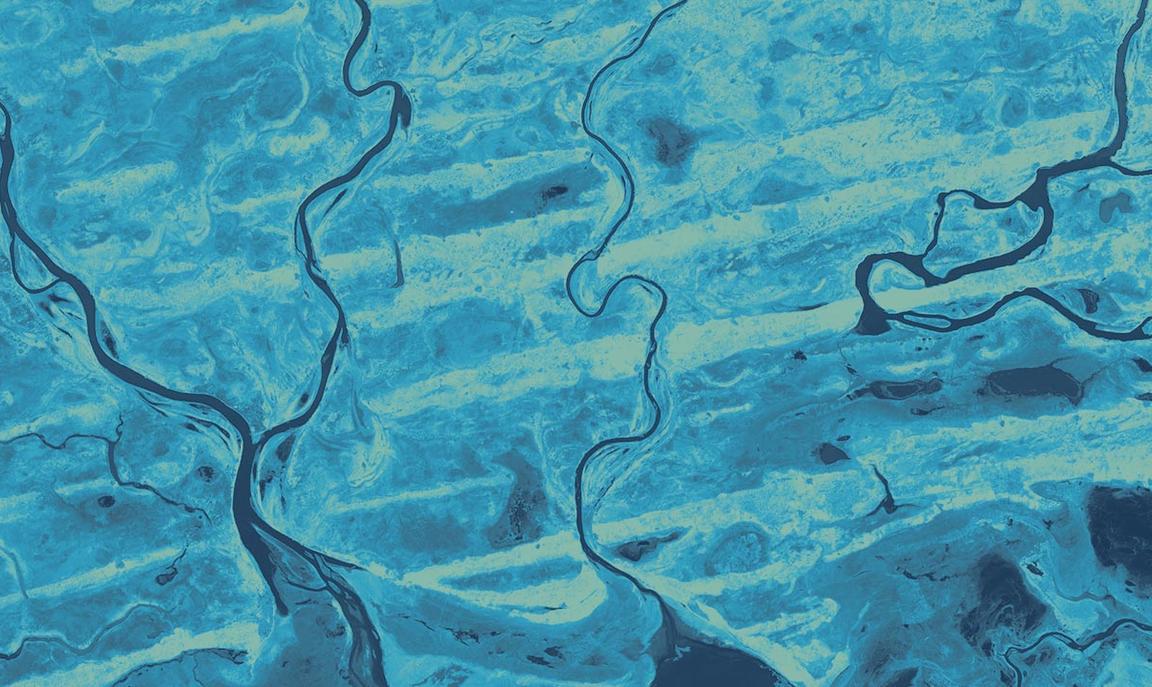
Salafi-Jihadism in Africa
Introduction

Violent extremism keeps spreading in Africa, showing notable resilience despite years of counter-extremism and prevention efforts by governments and international actors (1)*. In addition to killing thousands, it costs the affected regions an estimated $97 billion in lost informal economic activity each year (2).
Today, armed actors engaging in violent extremism in the continent are mainly affiliated with Islamist militant groups and organisations and particularly Salafi-jihadist ideology (3). Recent data indicates a dangerous expansion of Salafi-jihadist armed groups — often simply labelled as violent extremist or terrorist organisations (4) — beyond the traditional hotspots in the Sahel, Lake Chad Basin and the Horn of Africa to West Africa’s coastal states and Central and Southern Africa. The proliferation of militants linked to the Islamic State (IS) in particular and the infighting and complex ties among groups affiliated to different jihadist networks are raising growing alarm among observers.
The worrying trend is reflected in the increase of acts of violence designated as terrorism. According to the Global Terrorism Index (GTI), sub-Saharan Africa was the second region in the world affected by deadly terrorism in 2019, superseding the Middle East and North Africa (MENA) for a second consecutive year (5). Whereas globally the lethality of terrorism is somewhat decreasing, many countries in sub-Saharan Africa are experiencing a contrasting trend. Burkina Faso experienced the largest increase in terrorism in the world in 2019 with nearly 600 people killed in terrorist attacks. Terrorism was assessed to have increased significantly also in Mozambique, the Democratic Republic of Congo (DRC) and Niger, among others. Seven out of the ten countries most impacted by terrorist violence in 2019 are located in the region (6). Similar developments continued in 2020.
What makes Salafi-jihadist groups (7) appear ‘invincible’? This Conflict Series Brief analyses how Salafi-jihadism spreads across Africa and explores its potential future trajectories. (8) The first section of the Brief analyses the broader picture emerging from recent extremism-affiliated armed violence trends in the region. The second section analyses three aspects making these extremist groups particularly resilient and facilitating their spread in the continent. Based on the findings, the third section demonstrates the dangers of such adaptability, using two foresight scenarios for 2025. Finally, the concluding section outlines the main policy implications: what needs to change to prevent violent extremism from derailing Africa’s Agenda 2063 (9)?
Main violent extremism trends in Africa
The expansion of violent extremism in Africa is associated with five trends: (i) the rising share of violent extremism in the broader armed conflict landscape; (ii) the growing multiplicity of militant groups; (iii) the changing territoriality of groups; (iv) a nexus between Salafi-jihadism and communal violence; (v) varying perceptions and impact of extremism within countries.
The rising share of violent extremism in armed conflicts
Data from the Uppsala Conflict Data Programme (UCDP) show that Africa experienced 25 active state-based armed conflicts in 2019, which is the highest number of armed conflicts the continent has witnessed since 1946 (10). Of these conflicts, nine (more than one-third of the total) involved groups affiliated with the Islamic State, which was also responsible for 56 % of violence targeting civilians in the continent during the year. In addition to the conflicts fought between regimes and local branches of IS, conflicts involving al-Qaeda-affiliated Jama'a Nusrat ul-Islam wa al-Muslimin (JNIM) took place in Burkina Faso and Mali, while Kenya and Somalia fought conflicts against al-Shabaab. Altogether, according to the UCDP data, 10 out of 18 African countries involved in armed conflict faced a militant Islamist organisation (11). In several countries such as Somalia, Burkina Faso and Cameroon, new or reignited clashes involving extremist groups erupted alongside existing armed conflicts, thus adding to the complexity of their conflict landscapes. In comparison, in 2010 there were 10 active state-based armed conflicts in the continent, with two countries (Algeria and Somalia) being heavily influenced by Salafi-jihadist insurgencies (12).
Growing multiplicity of armed groups
While the familiar players such as al-Shabaab, Boko Haram, and al-Qaeda have remained resilient in the countries where they first emerged — except for al-Qaeda in the Islamic Maghreb (AQIM) which has significantly weakened in Algeria over time — many of these groups have also expanded their attacks and influence into new areas and countries. New groups have emerged and factional infighting and fragmentation have led to the formation of splinter groups. As a result, conflict dynamics have become more complex and horizontal — e.g. increased fighting between groups affiliated to al-Qaeda and IS — and mapping the different groups and their relations has become more difficult. The insurgency in northern Mozambique exemplifies the difficulties in defining local groups and their relation to transnational actors in areas where accessing information is challenging. In early 2021 the insurgents’ ties to IS appear ambiguous and there are many question marks around the nature of these ties and the unity of the group (13). Amid this complexity, four key protagonists with often multiple factions and fluctuating ties of conflict and cooperation can be identified (at the moment) as setting the scene for violent extremism in the continent: al-Shabaab, Boko Haram, JNIM and the local affiliates of IS.
Changing territorial dynamics
On a territorial level, the mapping of violence designated as terrorism and armed intrastate conflicts shows strong overlap. Traditionally, the capacity of groups to penetrate (or not) a region or country has been associated with state weaknesses and a history of civil conflicts. This makes it easier for groups to exert and maintain, or intentionally give up, territorial control (defined as ‘territoriality’). This does not only entail violence and terror. From JNIM in Mali to al-Shabaab in Somalia and Boko Haram in Nigeria, armed groups advance and maintain territorial presence by a combination of coercive tactics and providing governance services, either by replacing existing local institutions altogether or by co-opting these (14). In some cases, state elites have passively allowed a group to exercise control, or acquiesced in its presence, such as in the case of Boko Haram in its early years in Nigeria (15).
Other times, counterterrorism operations have made significant gains against violent extremists (e.g. Operation Serval in northern Mali in 2013) and/or a state’s capacities have been strong enough to impede insurgent groups from establishing a significant foothold in a country or an area within a country. However, empirical evidence shows that neither context equates to a defeat of Salafi-jihadism as such. As the situation in Mali demonstrates, military onslaught on an organisation tends to displace it rather than eradicate it. Once military pressure subsides, there is a high risk of a strong comeback and an expansion of extremism if the state’s governance capacities have not improved in the area and the group has meanwhile sought shelter elsewhere (16). Where the state is relatively capacitated, such as in much of Kenya or Tanzania, Salafi-jihadism tends to be limited to clandestine networks and terrorist attacks carried out by small cells. (17) In these contexts, a group rarely represents an imminent existential threat to the incumbent authorities. On the other hand, the invisibility of clandestine networks makes it hard for the state to defeat them, and they can serve as building blocks for future broader mobilisation.
Salafi-jihadism and communal conflict
Connected to these elements is the link between Salafi-jihadist groups and communal conflicts. There appears to be a mutually reinforcing connection between the territorial influence of jihadist-affiliated groups and the presence of tensions and even violence between local communities organised along ethnic or livelihood (herders/farmers) lines. This is particularly true in the Sahel but also elsewhere in the continent. This not only reflects the weakness of established authority in these areas but also the capacity of these groups to take advantage of situations where communities are competing over access to natural resources or political power. In Mali, for example, the JNIM has managed to take advantage of the community-based grievances either against the state or other groups and use these to increase mobilisation and undermine their opponents (18).
Varying realities of extremism
The presence, behaviour and perceived threat represented by militant groups vary significantly within countries. In the capitals and other big cities, everyday life might be little influenced by Salafi-jihadist groups, with human security being threatened mainly by other factors. Here, from the central state’s perspective, such groups rarely pose a serious direct threat to the government’s rule. Nevertheless, their presence undermines the state’s monopoly over the use of force and exposes its weaknesses. In rural areas on the other hand, when an insurgent group holds control, it can be viewed more as the de facto authority than a terrorist organisation. In contested areas, extremist groups rarely present the only violent threat to civilians and can be viewed as part of a myriad of violent actors. These varying realities within a country ultimately translate into different interests when it comes to ways of dealing with Salafi-jihadist groups. Approaching the issue only from a state security perspective or viewing Islamist militants as the main source of violence do not suffice to grasp the multiple challenges and needs related to political violence in a country.
What makes Salafi-Jihadism spread?
If trends are showing us something, it is that extremism in Africa represents more than just a security threat: Salafi-jihadist groups have gradually become fully-fledged and extremely resilient geopolitical actors, insofar as they are able to project power across geographic spaces in which violent extremism becomes institutionalised. The data shows the expansion of this space from local then regional hotspots to a continental dimension where all sub-regions of Africa have experienced the emergence of groups active across state boundaries. The following section discusses three interlinked elements that have facilitated the consolidation of violent extremism in different sub-regions and its expansion into a continental threat. These aspects are
- balancing the local-transnational
- flexibility of tactics; and
- benefiting from the other side’s mistakes.
Data: ACLED, 2021; Natural Earth, 2021
Balancing the local-transnational game
The question of the extent to which the main Islamist extremist groups in Africa are home-grown or imported through global transnational jihadist networks has generated considerable debate (19). It also shows how these groups have learned to balance between local approaches and transnational ambitions.
Poor access to state-provided governance in rural areas, group-level inequalities and inter-communal tensions provide vast, relatively easily penetrable terrain for violent extremism to flourish in the continent (20). As discussed, Salafi-jihadist groups have managed to tap into existing group-level security and political dilemmas but also fuelled the spiral of violent mobilisation. Whether the JNIM or the local IS branch in the Sahel, al-Shabaab in Somalia or Boko Haram in Nigeria, groups are good at taking advantage of the deeply political but little addressed inter-group disputes between farmer and herder communities and/or different ethnic groups and use these to recruit fighters and consolidate their local standing (21).
In particular, Salafi-jihadist groups do not only benefit from local grievances and poor governance but they have also become responsive to local sentiments and broader national politics: their rhetoric builds on anti-colonialism and they present themselves as local actors expelling foreign forces (22). Militant groups have also learned to act as brokers between competing local communal factions, offering services (arbitration, conflict resolution) not provided by the central and/ or local state actors (23). This has been the case for example in Mali’s Macina region, where some herder communities rely on jihadist groups to regulate access to pasture (24). Remarkably, the state actors, their security apparatus and the broader counterterrorism programmes have largely failed to outbid the militants at the local level as reliable security and services providers.
At the same time, the transnational ties between local insurgent groups and the wider al-Qaeda and IS networks play a significant role in ensuring financial and material resources, learning and emulating tactics, and drawing attention to the respective armed groups’ fight. Insurgent groups live in an increasingly interdependent world where, as for any organisation, connectivity and competitiveness are key. Local leaders of a group may choose to seek out closer engagement with a Salafi-jihadist network and/or its regional province to get access to better resources and/or build their own political leverage. In turn, the larger organisation benefits from viable local branches to maintain momentum, expand networks of resources and increase power vis-à-vis its strategic competitors.
Today, the organisation of groups tends to be network-based rather than strictly hierarchical. As a consequence (and cause), relatively autonomous local leaders may compete with each other and opportunistically shift their allegiance. This means that ‘decapitating’ a regional leader might not change the realities outside the immediate zone of influence, as capable local leaders continue to operate (and can expand their power and shift the geographical focus elsewhere) (25). Relatedly, an affiliation with a global jihadist group does not necessarily say much about why locals join a group. For example, Boko Haram fighters are found to have been mainly motivated by localised grievances and aspirations rather than by the lure of global jihadism (26). At times, joining an extremist group has become a way to strive for better personal and/or group safety in a situation where inter-group relations are under strain, hence further fuelling violence (27). This combination of localised grievances and motivations to join an insurgency and the dividends from linking local struggles to transnational groups provides a recipe for geographically expanding violent extremism as long as the structural vulnerabilities that enable insurgencies are not addressed.
Flexibility on a tactical level
Territorial fluidity and tactical shifts combined with flexibility at a strategic level have made Salafi-jihadist groups resilient. Al-Shabaab provides an example: the group typically leaves an area ahead of an African Union Mission in Somalia (AMISOM) offensive only to return once the military pressure subsides (28). In the face of major setbacks, such as when pushed to retreat from Mogadishu in late 2011 following offensives by AMISOM and Somali forces, the group has quickly adapted its outreach in these areas to hit-and-run attacks, reverting to its guerilla roots (29). Today, despite years of military operations against the group, al-Shabaab remains a potent actor with expanded territorial influence. (30)
The phoenix-like trajectory of Boko Haram tells a similar story. After being declared dead twice during 2015-2017, the group is very much alive today, as are the dangers it represents. (31) Over the course of its struggle, a key strength of Boko Haram has been its capacity to use areas with little state presence for retreat and regrouping while utilising a myriad of tactics to maintain resource flow (including robberies, extortion, kidnapping, looting and infiltration of various security services). Similarly to some other groups, Boko Haram seems to have tried to exploit the window of opportunity created by the pandemic, making April 2020 one of the deadliest months in the regional conflict since 2014-2015 (32).
Counter-terrorism operations in the Sahel, including Operation Barkhane, the G5 Sahel joint force (FC-G5S), and the United Nations Multidimensional Integrated Stabilization Mission in Mali (MINUSMA), face parallel challenges with achieving sustainable wins against violent extremism, as the militants move swiftly and return when the strategic environment allows (33). In particular, this game of cat and mouse between militant groups and counter-terrorism forces pushes groups to explore new areas and move across borders as tactical responses to more capacitated opponents in the face of military onslaughts.
The flexibility of Salafi-jihadist groups goes beyond territorial tactics. Since Boko Haram split into two factions in 2016, the Islamic State West Africa Province (ISWAP) has intensified actions aimed at reaching out to population and communities, in deliberate contrast to the more ruthless practices of Jama'atu Ahlis-Sunna Lidda'Awati Wal-Jihad (JAS). ISWAP has ramped up its attacks against security forces since mid-2018 in a pattern of escalating insurgency while attempting to win the support of the local Muslim population and promote a vision of socio-economic prosperity (34). In the Sahel, JNIM-affiliated militants’ recent openness to engage in negotiations with local state authorities signals strategic flexibility, departing from a non-negotiable extremist position. Simultaneously, the ideological motivation of these groups around jihad (whether global or local) adds to their flexibility regarding their time-horizons: no matter how many setbacks and delays they face, and whatever regime they face, their mission remains relevant.
Benefiting from the other side’s mistakes
Not only do insurgent groups benefit from the structural failures of their opponents to provide governance and security, but they likely benefit from the operational responses taken by states against them. Lethal abuses of power by security forces have increased considerably in the Sahel and reportedly also in other regions, for instance in Mozambique (35). A UN-study finds that 71% of voluntary recruits cite government action as the final trigger that motivated them to join an extremist group (36). It is therefore plausible that indiscriminate targeting of locals by government-affiliated forces spikes local recruitment of Salafi-jihadist groups. The reliance on local self-defence groups can further push certain communities to seek protection from the jihadists.
Equally, the incapacity to address escalating inter-group violence beyond violent extremism makes security operations appear weak and inefficient, even when the lack of interference in local violence more broadly is a function of the mandate (as with Barkhane and its restricted focus on countering jihadist violence in the Sahel). (37) This amplifies the opportunities of the groups to present themselves as more reliable and effective security providers. The result is a ‘composite insurgency’ in which a patchwork of different groups are supporting, tolerating or colluding with jihadists viewed as more efficient and less arbitrary than the state.
Towards a more violent future?
The future of Salafi-jihadism and violent extremism in Africa presents a gloomy picture. Armed groups are not only expanding; they are also remarkably adaptive and resilient when facing difficulties. This arguably makes them well suited to adjust to and co-exist with the multiple transformations that the African continent is undergoing, such as greater digitalisation, urban growth or trade integration. Two scenarios help to illustrate how violent extremism may adapt to changing circumstances. They depict two different cases for violent extremism expansion, both showing the interplay of the three adaptation elements previously identified. The first scenario illustrates the changing ‘territoriality’ of violent extremism and the second scenario a variation of the extremist threat spreading from rural areas to urban centres. The scenarios are not a definite statement on the future trajectories of violent extremism, but a way to illustrate hypothetical pathways and their implications for prevention and response strategies.
Scenario 1: A self-proclaimed caliphate in northern Mozambique
In September 2025, the Islamic State of Southern Africa (ISSA) launches a heavy, rapidly moving offensive in the Niassa province of northern Mozambique, overtaking Mecula swiftly and continuing westward towards the provincial capital Lichinga. It has been a year since the group gained control of a vast area in Cabo Delgado (from Palma to Negomano and Macomia) and declared a Caliphate of Southern Africa in the region. Its strict Islamist rule is implemented by a network of co-opted local leaders but also by imams imposed by the extremists in areas where local resistance continues. While targeted violence against anyone suspected of mobilising resistance or collaborating with the state is common (due to an effective network of informants and cyber espionage), the last few months have witnessed a decrease in indiscriminate violence against civilians in the Caliphate. For this reason and because of the relatively effective response by the militants to the cholera outbreak in northern Mozambique in the aftermath of the Esmeni cyclone, some internally displaced persons who fled the region during the intensified armed violence in 2021-2022 have returned.
The emergence and consolidation of the Caliphate in northern Mozambique follows a few years of shifting counter-terrorism tactics by the Mozambican government and its partners. In 2021, while cooperation between Mozambique and its partners increased in terms of equipment and tactical support for military operations in the country, no regional joint strategies and/or framework for multi-level preventive action was taken against the growing threat. Moreover, heavy reliance on foreign security actors and frequent human rights violations by the security forces alienated a growing number of people in northern Mozambique and drew the attention of young people in the wider region. Heavier military presence led by the Southern African Development Community in the region in 2022-2023 pushed the insurgents into retreat and helped the state to regain control over the strategically important port towns in Cabo Delgado. However, it did not manage to gain a strategic win over the jihadists, most of whom escaped unharmed to neighbouring provinces or countries. Weak local ties and poor intelligence contributed to mistargeted killings of civilians suspected to be extremists, which further angered the public in the region and led to protests against the military operation. In 2024, the bulk of the military troops were relocated to the south due to growing political tensions amid the economic fallout from the pandemic. This allowed increasingly transnationally connected jihadists to gain territorial control in the north. Changing their name to the Islamic State of Southern Africa, the group launched a massive information campaign that attracted thousands of young foreign fighters from the region — particularly from South Africa — to join the Caliphate and lead a life free from the ‘corrupting and polluting influence of the modern fake state’.
Scenario 2: urban extremism under the AfCFTA
By November 2025, significant steps forward are finally being taken in the implementation of the African Continental Free Trade Area (AfCFTA) after delays and difficulties caused by the Covid-19 pandemic. Between 2023 and 2025, cross-border trade has recovered and started growing as political processes to dismantle tariffs and non-tariff barriers begin to bear fruit. Aware of the risks related to freer movement of people and goods within the continent, states have embarked on increased cooperation to prevent and counter illicit trafficking and violent extremism. This includes plans to intensify intra-regional information sharing and intelligence gathering within the framework of the Continental Conflict Early Warning System. Nevertheless, the slow political process in effectively improving coordinated efforts combined with some considerable negative short-term effects of the trade liberalisation — particularly in weaker economies — have translated into increased opportunities for non-state armed actors and political grievances among many population groups. Extremist groups are quick to seize the opportunities. (38)
In December 2025, a series of terrorist attacks take place in Luanda, Angola, targeting the growing city’s financial hub and killing over 200 people while injuring hundreds more. Shortly after the attacks, it is discovered that the fertilizer used for the improvised explosive devices that were deployed in the attacks had been ordered from Kenya through Jumia. While several of the perpetrators had been on the Angolan security services’ watchlist, the international transactions from Kenyan companies had not caused any alarm due to lack of inter-state coordination of intelligence. Moreover, a key planner of the deadly attacks turned out to be of Tanzanian origin and a known recruiter, who had nevertheless managed to cross borders to Angola a few months in advance. The attacks in Luanda are the deadliest in an increasing number of urban attacks in the continent carried out by clandestine networks of Salafi-jihadist groups with loose transnational links and increased opportunities to obtain access to goods and resources and to share tactical lessons learned.
Conclusions: Buffers against violent extremism?
Once a violent extremist group has emerged in a particular area, military approaches aimed at defeating it on the battlefield are the default option to restore security. Yet, groups adapt quickly to dynamics on the ground, even when facing tactical defeats: each time an African government has declared a group to be ‘defeated’, their pronouncements have been contradicted shortly afterwards. The two scenarios have illustrated how the local-transnational game or tactical flexibility could allow violent extremist groups to further expand and consolidate territorial control or scale-up urban attacks.
There is no recipe that can be applied across the board. An adaptive threat will die hard if it finds fertile ground to spread. Governments and the international community can either prevent the threat from arising or make the ground less fertile. The scenario on ‘urban extremism’ is a case for prevention: continental urban extremism is not (yet) a trend and there is still time for policy action to ensure that free movement and market liberalisation under the AfCFTA do not happen to the detriment of regional security, for instance by investing in urban governance and intra-regional information sharing, intelligence gathering and early warning (39).
In contrast, the scenario in northern Mozambique is already beyond prevention (40). But ground can be made less fertile for Salafi-jihadist insurgents to consolidate their presence. While (rural) communities are often seen through the lenses of vulnerabilities, such as socio-economic deprivation, poor access to just governance and religious radicalisation, they can also exhibit remarkable resistance against armed groups, including through community-led re-organisation of districts and villages, as a recent study on north-east Nigeria has shown. (41) Cultivating social and inter-communal cohesion in areas that are more vulnerable to violent extremism may not defeat Salafi-jihadism but it can weaken its influence on the ground. In Somalia for instance, a strategy against gender-based violence could prove beneficial to alleviate women’s suffering and reduce incentives to collaborate with al-Shabaab, while paving the way for a better understanding of women’s roles in violent extremist operations. (42) Ultimately, a coping strategy based on a more balanced investment in equitable governance and security, prioritising civilian protection, public service delivery and community engagement that secures rather than threatens religious and ethnic identities could lay the ground for a ‘speak with the bad guys’ (43) approach. This would allow governments to negotiate from a better position once talks become possible. In conclusion, rather than trying to eradicate extremists through military onslaughts, focusing on coping strategies based on social resilience would be a much stronger buffer against violent extremism.
References
* The authors would like to thank Ms. Jeanne Ramier, trainee at the EUISS, for her precious research assistance.
(1) Defined as Preventing Violent Extremism (PVE) and Countering Violent Extremism (CVE) approaches.
(2) UNDP, ‘Measuring the economic impact of violent extremism leading to terrorism in Africa’, April 2020 (https://www.undp.org/content/undp/en/home/ librarypage/democratic-governance/measuring-the-economic-impact-of- violent-extremism-leading-to-te.html).
(3) See Cilliers, J., ‘Future (im)perfect? Mapping conflict, violence and extremism in Africa’, Institute for Security Studies, No 287, 2015; See Raineri, L., Cissé, A.W., Kalpakian, J., Lounnas, D. and Strazzari, F., ‘Policy brief summarizing the EU and other stakeholders’ prevention strategy towards violent extremism in the Maghreb and the Sahel’, Preventing Violent Extremism in the Balkans and the Mena: Strengthening Resilience in Enabling Environment (PREVEX), 2020.
(4) Violent extremist organisations (VEOs) are armed groups using violence and coercion aiming at dismantling existing state authority and imposing an alternative, totalitarian order. Terrorism is defined instead as (the threat of) politically motivated violence that aims to frighten and influence the behavior of a community/society beyond its immediate victims. In this Brief, we refer to ‘Salafi-jihadist armed groups’ as Islamist VEOs spreading their influence in Africa, including through terrorism and insurgent violence. See also: Bak, M., Tarp, K.N. and Schori Liang, C., ‘Defining the concept of violent extremism: delineating the attributes and phenomenon of violent extremism’, Geneva Paper 24/19, 2019; Weinberg, L., Pedahzur, A., and Hirsch-Hoefler, S., ‘The challenges of conceptualizing terrorism’, Terrorism and Political Violence, Vol. 16, No 4, 2004, pp. 777-794; Richards, A., ‘Conceptualising terrorism’, Terrorism and Political Violence, Vol. 37, No 3, 2014, pp. 213-236.
(5) Institute for Economics & Peace, ‘Global Terrorism Index 2020: Measuring the Impact of Terrorism’, November 2020 (https://www.visionofhumanity.org/ wp-content/uploads/2020/11/GTI-2020-web-1.pdf).
(6) Ibid.
(7) In this Brief, the authors use the term ‘groups’ to designate Salafi-jihadist armed groups.
(8) The underlying root causes and drivers have been largely addressed by the academic and policy literature. See for example: Rupesinghe, N. and Bøås, M., ‘Local drivers of violent extremism in Central Mali’, UNDP Policy Brief, United Nations Development Programme, 2019; Botha, A. and Abdile, M., ‘Radicalization and Boko Haram – Perception versus Reality’, The Network for Religious and Traditional Leaders, 2017. On the complex relation between violent extremism and climate change, see Raineri, L., ‘Sahel climate conflicts?: When (fighting) climate fuels terrorism’, Brief No 20, Conflict Series, EUISS, December 2020.
(9) The Agenda 2063 is the continent’s strategic framework that aims to deliver on the goals of inclusive and sustainable development (https://au.int/en/ agenda2063/overview).
(10) Petterson, T. and Öberg, M., ‘Organized violence, 1989-2019’, Journal of Peace Research, Vol. 57, No 4, 2020, pp. 597-613.
(11) Ibid.
(12) Ibid.
(13) Hamming, T., ‘The Islamic State in Mozambique’, Lawfare, January 2021.
(14) Hansen, S.J., Horn, Sahel and Rift: Fault lines of the African Jihad, Hurst and Company, London, 2019.
(15) Ojolo, A., ‘Nigeria’s troubled North: interrogating the drivers of public support for Boko Haram’, ICC Research Paper, October 2013.
(16) Bere, M., ‘Armed rebellion, violent extremism, and the challenges of international intervention in Mali’, African Conflict and Peacebuilding Review, Vol. 7, No 2, 2017, pp. 60-84.
(17) Horn, Sahel and Rift, op. cit.
(18) ‘Local drivers of violent extremism in Central Mali’, op.cit.
(19) See Higazi, A., et al., ‘A response to Jacob Zenn on Boko Haram and al-Qa’ida’, Perspectives on Terrorism, Vol. 12, No 2, 2018, pp. 203-213.
(20) Cooke, J.G. and Sanderson, T.M., ‘Militancy and the arc of instability: violent extremism in the Sahel’, Center for Strategic and International Studies, September 2016.
(21) ‘Local drivers of violent extremism in Central Mali’, op.cit.; Gridneff, I.,‘Al-Shabaab strategy shifts toward clans as Presidential election looms’, IPI Global Observatory, 27 January 2017 (https://theglobalobservatory.org/2017/01/ al-shabaab-strategy-shifts-toward-clans-as-election-looms/).
(22) Nsaibia, H., ‘Mali: end to the storm?’, ACLED, 17 December 2020 (https:// acleddata.com/2020/12/17/mali-any-end-to-the-storm/).
(23) Horn, Sahel and Rift, op. cit.
(24) International Crisis Group, ‘A course correction for the Sahel stabilization strategy’, Crisis Group Africa Report No 299, February 2021 (https://www. crisisgroup.org/africa/sahel/299-course-correction-sahel-stabilisation- strategy).
(25) Mcquinn, B., ‘Armed-group proliferation: origins and consequences’, in The Armed Conflict Survey, The International Institute for Strategic Studies, May 2020.
(26) Pérouse de Montclos, M.-A, ‘Du Nigeria au Maghreb : le chaînon manquant entre Boko Haram et Al-Qaïda’, Maghreb-Machrek, No 222, 2015, pp. 111-122.
(27) Cline, L., ‘Jihadist movements in the Sahel: Rise of the Fulani?’, Terrorism and Political Violence, 2021 (https://doi.org/10.1080/09546553.2021.1888082).
(28) Felter, C., Masters, J. and Aly Sergie, M., ‘Al-Shabaab backgrounder’, Council on Foreign Relations, 10 January 2021 (https://www.cfr.org/backgrounder/al- shabab)
(29) ‘Al-Shabaab: An Interview with Christopher Anzalone’, Harvard University, Remote Warfare Programme, 31 January 2018.
(30) Olojo, A., ‘Time to consider negotiating with al-Shabaab in Somalia?’, ISS Today, Institute for Security Studies, 11 June 2019 (https://issafrica.org/iss- today/time-to-consider-negotiating-with-al-shabaab-in-somalia).
(31) Campbell, J., ‘Beyond the pandemic, Boko Haram looms large in Nigeria’, Council on Foreign Relations, 11 June 2020.
(32) Council on Foreign Relations, ‘After Lake Chad Offensive, April One of Deadliest Months in Boko Haram Conflict’, 12 May 2020 (https://www.cfr.org/ blog/after-lake-chad-offensive-april-one-deadliest-months-boko-haram- conflict); Mustasilta, K., ‘From Bad to Worse? The Impacts of Covid-19 on Conflict Dynamics’, Brief No 13, Conflict Series, EUISS, June 2020 (https://www. iss.europa.eu/content/bad-worse-impacts-covid-19-conflict-dynamics).
(33) A course correction for the Sahel stabilization strategy’, op. cit.
(34) Allen, N., ‘How Boko Haram has regained the initiative and what Nigeria should do to stop it’, War on the Rocks, 24 December 2019 (https:// warontherocks.com/2019/12/how-boko-haram-has-regained-the-initiative- and-what-nigeria-should-do-to-stop-it/).
(35) Nsaibia, H., ‘State atrocities in the Sahel: the impetus for counterinsurgency results in fueling government attacks on civilians’, Analysis, Armed Conflict Location and Data Project (ACLED), 20 May 2020 (https://acleddata. com/2020/05/20/state-atrocities-in-the-sahel-the-impetus-for-counter- insurgency-results-is-fueling-government-attacks-on-civilians/); Cabo Ligado Weekly: 14-20 September 2020, ACLED, 2020 (https://acleddata. com/2020/09/22/cabo-ligado-weekly-14-20-september-2020/).
(36) UNDP, ‘Journey to Extremism in Africa: Drivers, Incentives and the Tipping Point for Recruitment’, 2017 (http://journey-to-extremism.undp.org/content/ downloads/UNDP-JourneyToExtremism-report-2017-english.pdf).
(37) ‘A course correction for the Sahel stabilization strategy’, op. cit.
(38) Faleg, G. (ed.), ‘African Futures 2030: free trade, peace and prosperity’, Chaillot Paper No 164, EUISS, February 2021, p. 71 (https://www.iss.europa.eu/ content/african-futures-2030).
(39) Gnanguenon, A., ‘Pivoting to African conflict prevention? An analysis of continental and regional early warning systems’, Brief No 3, EUISS, February 2021 (https://www.iss.europa.eu/content/pivoting-african-conflict-prevention).
(40) The ‘prevention window’ for Mozambique closed two years ago, in 2019. See: Faleg, G., ‘Conflict prevention in Mozambique: can there be peace after the storm?’, Brief No 5, EUISS, April 2019.
(41) Olojo A, ‘Making sense of resilience in the Boko Haram crisis’, West Africa Report, Institute for Security Studies, June 2020.
(42) Crisis Group, ‘Women and Al-Shabaab’s Insurgency’, Briefing No 145, 27 June 2019 (https://www.crisisgroup.org/africa/horn-africa/somalia/b145- women-and-al-shabaabs-insurgency).
(43) Crisis Group, ‘Speaking with the “Bad Guys”: Toward Dialogue with Central Mali’s Jihadists’, Report No 275, 28 May 2019 (https://www.crisisgroup.org/ africa/sahel/mali/276-speaking-bad-guys-toward-dialogue-central-malis- jihadists).
